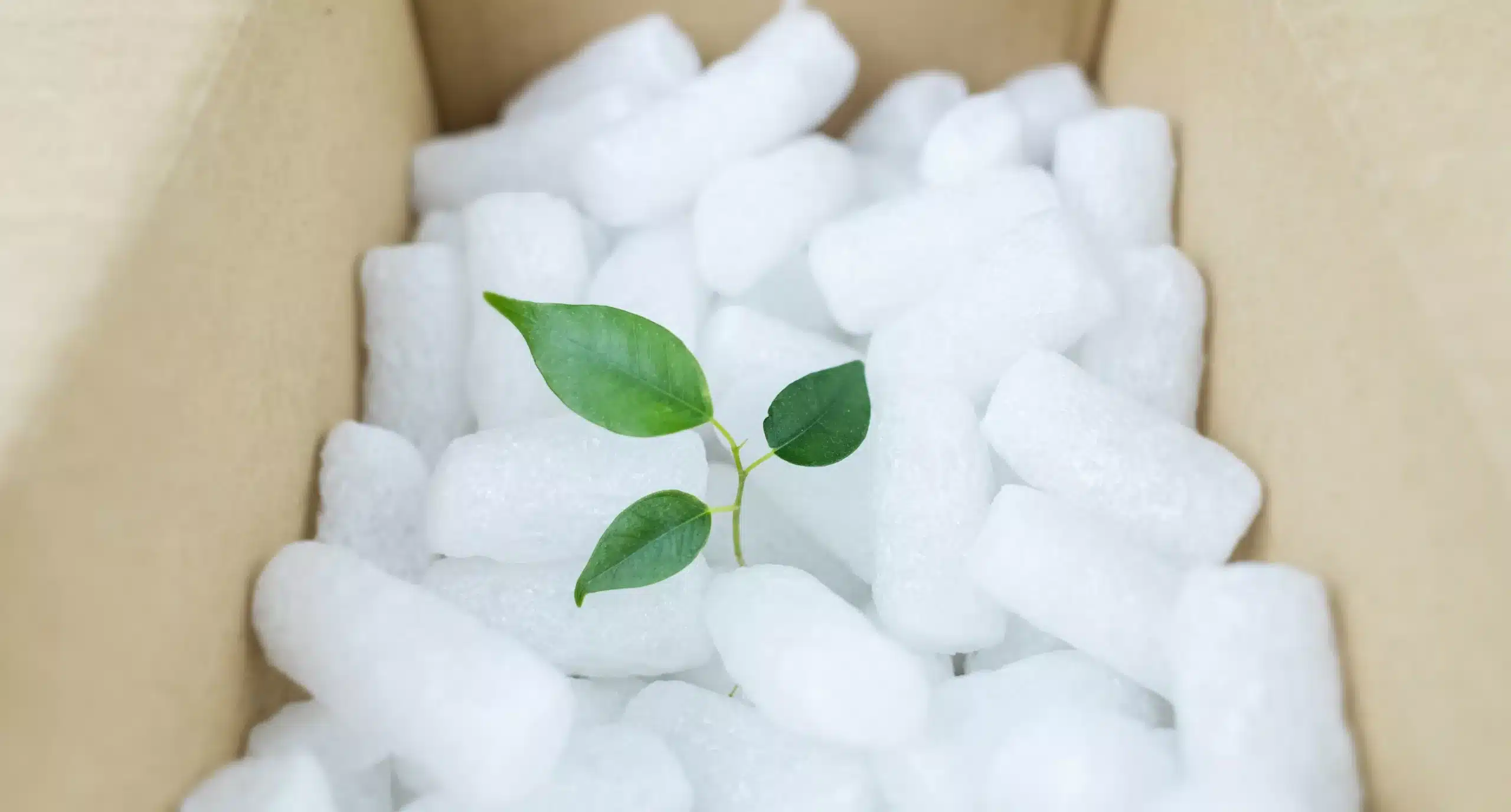Compostable packaging: an essential guide

Reducing impact on the environment is high on the agenda of millions of businesses – large and small. And well designed, sustainable packaging is a great way to lower your carbon footprint.
When it comes to eco-friendly packaging materials, one of the most common requests that we hear is for compostable packaging.
On the surface, compostable packaging sounds great – but it’s important to understand what compostable packaging is, how it differs from other sustainable packing materials and acknowledge that not all compostable packaging is made equal.
So, in this blog we’ll be diving into the topic of compostable packaging, looking at its pros and cons and understanding its role in reducing businesses’ impact on the environment…
- 1.
- 2.
- 3.
- 4.
- 5.
Key points to take away:
- The recycling infrastructure in the UK does not currently support compostable packaging at scale and careful consideration needs to be given to end of life handling
- This sort of packaging is likely to lend itself best to particular applications, like closed loop events such as festivals, where it can be readily segregated and collected
- Clear labelling is critical in this type of packaging alongside adherence to the standards and regulation (it’s worth noting that in the UK all biodegradable and compostable packaging will be required to carry a ‘Do not recycle’ label by 2026)
- Biodegradable is a very broad term, and it is important to understand whether packaging is fossil oil based, plant based, or a mixture as well as whether it is compostable in industrial processes or at home.

What is compostable packaging?
Compostable packaging is a type of packaging material that can be disposed of in a responsible way and adheres to the principle of circular economy.
Compostable packaging products are made from materials that decompose fully into compost without producing toxic residue as they break down. To be classified as compostable, packaging materials must meet specific criteria set out in European Standard EN 13432 – “Packaging: requirements for packaging recoverable through composting and biodegradation”. Materials are tested against standards for:
- Disintegration
- Biodegradability
- Absence of negative effect on the composting process
- Low levels of heavy metals / toxicity
- Impact on characteristics of compost (such as pH levels, bulk density, and salinity, etc.)
For these standards, independent testing and certification is available. But not all compostable packaging materials are considered equal. Different requirements need to be met for a packaging material to be classed as industrially compostable versus home compostable.

Home compostable vs. industrially compostable packaging
When packaging is labelled compostable – it is important to differentiate between industrially compostable and home compostable materials. Both types are held to different standards and should be labelled differently.
| Industrially Compostable | Home Compostable | |
| Biodegradation | Materials are tested for biodegradation at 58 °C +/- 2 °C, with carbon dioxide at least 90 % compared with control within 6 months. | Materials are tested for biodegradation at an ambient temperature (20-30°C), with carbon dioxide at least 90 % compared with control within 365 days. |
| Disintegration | Test for disintegration is performed at whatever temperatures are achieved in testing vessels. Vessels are at least 140 litres. After a maximum of 12 weeks no more than 10 % of original dry weight of test material should be > 2 mm. | Test for disintegration are performed at 20 – 30°C in vessels that have at least a140 litre capacity. After a maximum of 26 weeks no more than 10 % of original dry weight of test material should be > 2 mm. |
| Certification logo / labelling |  Din Certo | Vinçotte |
This highlights how clear labelling is key on packaging materials as it helps the end user know how to dispose of packaging properly. For example, in our most recent Unboxing Survey, 11% of consumers were unsure of how to dispose of the packaging they receive. Compostable packaging can make this extra tricky – as not all compostable packaging is suitable for home composting, which is why the labelling is so important.
In fact, most of the compostable packaging is unlikely to be home compostable, with industrially compostable the most common, and lots not compostable at all.

The difference between compostable and biodegradable packaging
There is a common misconception that compostable and biodegradable packaging are interchangeable. In fact, they are not the same.
If something is biodegradable, it simply means it will decompose with the help of bacteria or other living organisms over time. Theoretically, all things will decompose eventually, but some may take thousands of years to do so!
Biodegradable products also require specific conditions to break down properly and may produce harmful greenhouse gas emissions if left to decompose in landfill. Therefore, although the decomposition process occurs naturally, it can still be harmful to the environment.
In contrast, compostable products disintegrate without harming the environment, turning into soil enriching compost instead. To be classified as compostable, they must meet specific requirements set out in the BS EN 13432 certification scheme.
For more information, read our blog post: What’s the difference between recyclable, biodegradable and compostable packaging?

How compostable packaging can reduce impact on the environment
So, how can packaging reduce your businesses impact on the environment? Here we look at several factors – it’s role in the circular economy, if it can be recycled and the benefits and challenges associated with using this type of packaging:
Compostable packaging and contributing to the circular economy
For many, compostable packaging is a step in the right direction in terms of packaging and the environment. However, it is worth noting that compostable packaging is still single use.
The Ellen MacArthur foundation describe a packaging material’s ability to compost as “nature’s recycling” and emphasize how the right application of compostable packaging is key to its success in building a circular economy.
When used appropriately, it is another weapon in the packaging industry’s arsenal to prevent waste and regenerate nature but long-term, infrastructure to support organic material collection and repurposing will be key to make compostable packaging a success.
Therefore, businesses must ask themselves if compostable packaging is right for their packaging strategy and make an informed decision whether they should first look at material reduction or reuse.
Is compostable packaging recyclable?
This all depends on the type of compostable packaging you’re using.
For example, some compostable and biodegradable materials, such as cardboard, can be recycled. Compostable plastics, however, are not designed to be placed into the mixed recycling bin, due to the differences in decomposing processes.
Most recycling plants in the UK are not equipped to deal with compostable plastics, and placing them into mixed recycling could simply lead to potential contamination. They will have to be placed into your general waste bins instead.
If packaging is labelled as “home-compostable”, you should be able to dispose of it by placing it in the home compost in your garden.
Benefits of using compostable packaging
Switching to compostable packaging can help reduce your environmental impact and carbon footprint.
Compostable packaging takes less time to break down in landfills and does not produce harmful substances in the process. It can enhance soil quality and, as it’s made from organic materials, requires fewer sources to be produced.
Compostable packaging can also help improve your brand image and show that your company cares for the environment – but it must be used appropriately and labelled properly – as we’ve highlighted in this article.
Challenges of using compostable packaging
While there are benefits of using compostable packaging, there are potential challenges too.
Packaging labelled as “compostable” is not always suitable for home-composting. It is important to check the labels to make sure the packaging is disposed of correctly to avoid cross-contamination. This is something that businesses need to factor in.
Compostable plastics cannot be placed into the recycling bin as they require the correct decomposing conditions to fully disintegrate. Currently, there are only a few facilities within the UK that can process them, therefore, unfortunately, they often end up in general waste bins.
Compostable packaging can also be more expensive, however, as demand for it grows, there’s a potential for it to become less pricey. If designed correctly and used in an appropriate application, it can also save you costs in the long run, but businesses should balance the swap against if reducing material use or returnable packaging options could have better environmental impact for their operation.
When considering plant-based bioplastics, case should be taken to understand how that plastic is being created and the environmental consequences around land use, agriculture and transport relative to the alternative.
There are some exciting innovations in the compostable packaging area, and it is the one to watch, as it’s likely to continue to evolve! One fantastic example is the Seaweed Packaging that won the Earth Shot prize with packaging that is completely natural and harvested in an environmentally friendly way from seaweed.
This has brilliant applications currently for primary packaging but is not yet on the scale to offer viable secondary packaging solutions.

Support with sustainable packaging
If you need help with sustainable packaging, including compostable packaging materials, Macfarlane Packaging is here to help.
Our experts can help you make an informed choice about the packaging solutions you use, so they control your operational costs without costing the Earth!
You can see more about our approach to eco-friendly packaging here.
Contact us today for further support.
